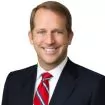The healthcare industry continues to have greater union representation than the private-sector as a whole. And unions have taken advantage of their stronger position in the healthcare sector to push for increased wages and benefits, as well as less subcontracting of work in recent months.
Although perhaps counter-intuitive, the strong economy and low unemployment rate have worked to strengthen Labor's hand because healthcare providers are already struggling to find qualified applicants to fill all open positions. As a result, when faced with a potential labor shortage, healthcare providers have few options for temporary assistance to keep operations going during a strike. This reality has allowed unions to aggressively push for their demands in 2019.
According to the U.S. Bureau of Labor Statistics, one in every seven jobs created in the U.S. in 2018 came in the healthcare sector. The growth in healthcare demand and jobs is due to coalescing of factors, including an aging healthcare workforce, retirement of the Baby Boomer generation, and a slowing nationwide population growth.
The growing need for healthcare services has coupled with a historically low employment rate to put increased pressure on healthcare providers to raise the wages and benefits of their workforce. For example, in September 2019, the national unemployment rate declined to 3.5%. Moreover, the unemployment rate in the healthcare sector remains substantially lower than the national average, at 2.2%.
And healthcare providers have been unable to fill all open positions. According to the Bureau of Labor Statistics, in July 2019 (the latest month for which numbers are available), healthcare providers filled only about half of reported job openings. Furthermore, workers in the health care sector are more likely to be members of a union than workers in the overall private sector—7.7% compared to 6.4% in 2018.
Unions have taken advance of their stronger position in the healthcare sector and the economics of a stronger economy to push for increased pay and benefits. Indeed, healthcare sector unions flexed their muscles in 2019 on a larger (and more aggressive) scale than recent years, demanding greater pay and benefits, that fewer jobs be outsourced during the life of a contract, and that healthcare providers use fewer contract and temporary workers.
For example, in September more than 80,000 technicians, nurses, and other medical personnel at a national healthcare provider voted to authorize a strike. Similarly, about 2,200 nurses at a Chicago-area hospital] went on strike at the end of September.
Nor have unions limited their campaigns to traditional economic pressure. Unions have also brought political pressure to bear, including endorsements from Presidential candidates and other political allies.
Faced with such challenges, healthcare providers are under significant pressure to meet the workers' demands. For example, it can be very difficult in such a tight job market to find temporary workers who can fill-in while a strike takes place. For its part, the national healthcare provider and the union recently reached a deal that included increased wages and benefits for its workers, and that staved off the proposed strike.
In short, companies in the healthcare sector should anticipate increased pressure from unions as long as the economy remains strong and politics continue to focus on healthcare. This means taking a hard look at Labor's demands and analyzing the effect that a restrictive labor contract might place on a company's ability to adapt to a quickly-changing healthcare industry.
Originally published 8 October 2019
The content of this article is intended to provide a general guide to the subject matter. Specialist advice should be sought about your specific circumstances.



